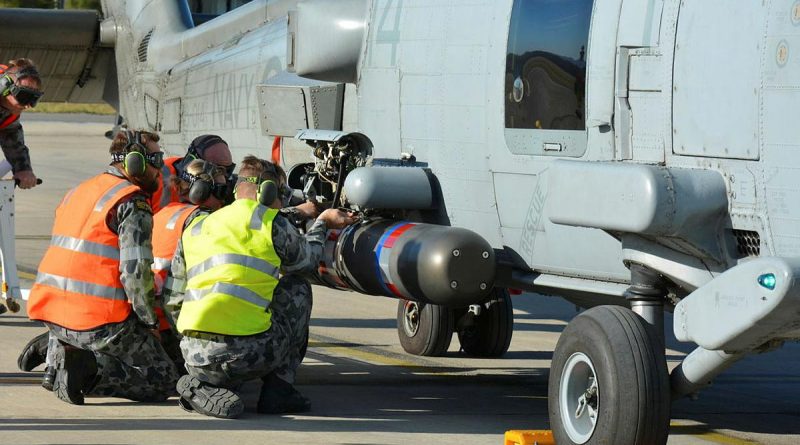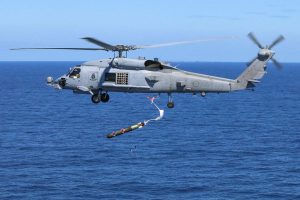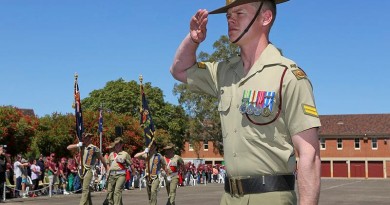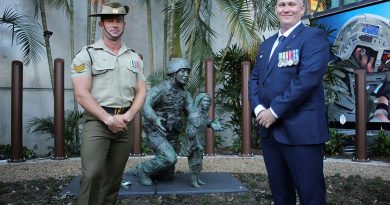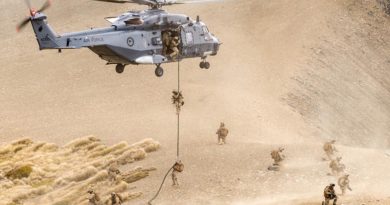Tigerfish tests warfighting proficiency of aircrews
Share the post "Tigerfish tests warfighting proficiency of aircrews"

Navy’s submarine-hunting and anti-surface warfare helicopters have successfully completed Exercise Tigerfish, proving the warfighting proficiency of aircrews from No. 816 Squadron.
CAPTION: No. 816 Squadron Flight 7 maintenance team re-arms MH-60R helicopter Tiger 14 with a torpedo during the anti-submarine warfare phase of Exercise Tigerfish. Story by Lieutenant Thomas Kennedy.
MH-60R Seahawk helicopters from the Nowra-based squadron dropped recoverable exercise torpedos and fired precision air-to-ground missiles and rockets at various surface and sub-surface training targets off the eastern coast, in order to practice, develop and demonstrate their ability to employ weapons system against realistic targets.
Overall, 16 weapons were employed during the two weeks of the exercise. It was the culmination of significant collaborative effort by units of the Fleet Air Arm and supporting agencies.
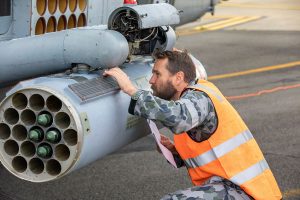
Flight Commander No. 816 Squadron’s Flight 1 Lieutenant Commander Matthew Hudson said the importance of the exercise to advancing aircrew skills could not be overstated.
“The success of Tigerfish has been crucial in furthering the MH-60R capability and increasing the lethality of our operational aircrews,” he said.
“For participating aircrew, the exercise provided a valuable opportunity to hone complex skills obtained in aircraft simulators with live weapons and real-world environments.”
Aviation Warfare Officer Lieutenant Eliza Josey said she was eager to put her synthetic training in simulators to use with real-world ordnance.
“The training benefit we receive from firing live weapons is invaluable and the opportunity to employ multiple weapons gives a crew the ability to enhance their skill sets and tactical appreciation for how we would actually fight,” Lieutenant Josey said.
For No. 816 Squadron maintenance teams, exercising the procedures for loading live ordnance helps ensure effective training to support aircraft entering potential conflict.
Petty Officer maintenance manager Matthew Cooney said the exercise gave his team a chance to increase familiarity with the complexities surrounding live weapon loading procedures.
“Participating in Exercise Tigerfish enables us as maintainers to refresh and put into practice the skills that we have previously been taught,” he said.
Navy has a fleet of 24 MH-60Rs across No. 816 and No. 725 Squadrons.
CAPTION: A Royal Australian Navy MH-60R Seahawk helicopter from 816 Squadron, Nowra, drops a Mark 54 Lightweight Hybrid Torpedo, during a recoverable torpedo exercise, off the coast of Jervis Bay, New South Wales in 2020. File photo by Chief Petty Officer Colin McCallum.
.
.

.
.
Share the post "Tigerfish tests warfighting proficiency of aircrews"

